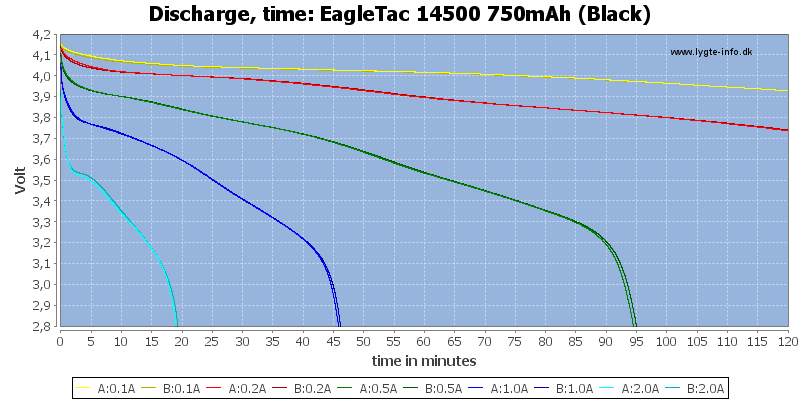How does one interpret battery discharge curves?
Here is a link to the Panasonic Carbon-Zinc D cell discharge curves. It is an Adobe Acrobat PDF file.
It is obvious that the battery will deliver a decreasing voltage for different lengths of time depending upon the amount of resistance to the load. They depict different graphs with different resistance values in ohms.
How can we use these graphs to estimate how long a LED will run with how many lumens?
I know that we will have to check the Cree data sheet for the particular LED to determine Lumens per ma.
Is there a way to calculate what the resistance is to the ma output delivered to the LED?
Is there a way to estimate the run time of a particular LED with one, two, or three batteries in series?
Here is a link to the Panasonic Carbon-Zinc D cell discharge curves. It is an Adobe Acrobat PDF file.
It is obvious that the battery will deliver a decreasing voltage for different lengths of time depending upon the amount of resistance to the load. They depict different graphs with different resistance values in ohms.
How can we use these graphs to estimate how long a LED will run with how many lumens?
I know that we will have to check the Cree data sheet for the particular LED to determine Lumens per ma.
Is there a way to calculate what the resistance is to the ma output delivered to the LED?
Is there a way to estimate the run time of a particular LED with one, two, or three batteries in series?
Last edited:


